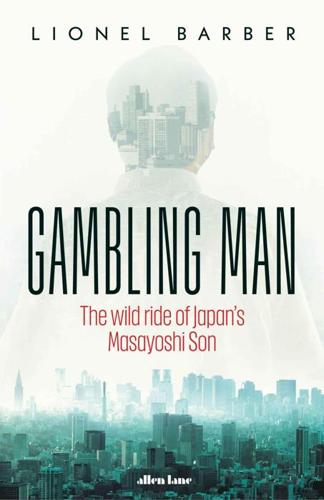
Gambling Man
by
Lionel Barber
Published 3 Oct 2024
Pachinko 1 Tosu Shishi Hensan Iinkai, Tosu Shishi, Vol. 4: Kindai-Gendai Hen, Tosu Shi, 2009, p. 474 2 Sano, Anpon, pp. 28–39 3 Atsuo Inoue, Aiming High: Masayoshi Son, SoftBank, and Disrupting Silicon Valley, Hodder & Stoughton, 2021, p. 2 4 Mitsunori Son, interview with author, 1 April 2023 5 Dower, Embracing Defeat, p. 108 6 Sano, Anpon, p. 115 7 Ibid., p. 159 8 Ibid., pp. 340–47 9 Ibid., pp. 350–51 10 Ibid., p. 28 11 Masayoshi Son (Masa), interview with author, 10 February 2023 12 Ibid. 13 Hiroshi Kodama, interview with author, 24 October 2022 14 Nikkei, 8 November 2017 15 Mitsunori Son, interview, 1 April 2023 16 Senior SoftBank official, who asked not to be named, interview with author, November 2023 17 Masa, interview, 10 February 2023 18 Nikesh Arora, interview with author, 30 November 2022 19 See Kazuo Sugiyama, Pachinko Tanjō: Cinema no Seiki no Taishō Goraku, Sōgensha, 2008, p. 40, and Emiko Suzuki, Ten no Kugi: Gendai Pachinko o Tsukutta Otoko Masamura Takeichi, Banseisha, 2001, p. 51 20 Min Jin Lee, Pachinko, Apollo, 2020, p. 415 21 Fortune, 30 January 2017 22 Lee, Pachinko, p 414 23 Mitsunori Son, interview, 1 April 2023 24 Ibid. 25 Masa, interview, 10 February 2023 26 ‘Den Fujita, Japan’s Mr Joint Venture’, Obituary, New York Times, 22 March 1992 27 Ibid. 3.
…
The Great Escape 1 Duncan Mavin, The Pyramid of Lies, Pan Macmillan, 2023, pp. 158–64 2 Ibid. 3 The account of the meetings between Masayoshi Son and Elliott Management are based on several sources who spoke on condition of not being identified 4 Warren Buffett on CNBC ‘Squawk Box’, interview, 26 February 2018 5 A person present at the meeting speaking off the record 6 Senior former SoftBank executive speaking off the record 7 Kana Inagaki and Leo Lewis, ‘SoftBank: inside two weeks of turmoil that squeezed Masayoshi Son’, Financial Times, 5 April 2020 8 Ibid. 9 Masa, interview with author, 18 October 2023 10 The following is based on multiple sources speaking off the record 11 Robert Smith and Kana Inagaki, ‘Jesus Christ was also misunderstood, Masayoshi Son tells investors’, Financial Times, 18 May 2020 28.
…
About the Author Lionel Barber, editor of the Financial Times from 2005 to 20, is an author, broadcaster and lecturer. During four decades as an award-winning journalist, he has interviewed many world leaders and leading CEOs. He is a regular visitor to Japan. Lionel Barber * * * GAMBLING MAN The Wild Ride of Japan’s Masayoshi Son Contents List of Illustrations A Style Note on Names Cast of Characters Prologue PART ONE: BOY GENIUS 1. Roots 2. Pachinko 3. American Awakening 4. Lost in Translation 5. SoftBank 1.0 PART TWO: RISE AND FALL 6. Miracle Cure 7. Mr Gateway 8. Paper Billionaire 9. What Does It Take to Win?
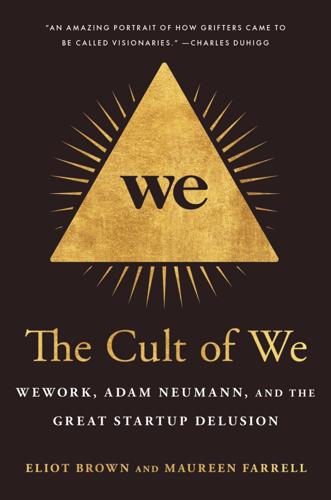
The Cult of We: WeWork, Adam Neumann, and the Great Startup Delusion
by
Eliot Brown
and
Maureen Farrell
Published 19 Jul 2021
introduced by a local CEO: “Launching of Startup India Movement,” YouTube, streamed live on January 16, 2016, https://www.youtube.com/watch?v=X8T4Xnjuy0Q (Neumann introduced at 52:40). “We’re in nineteen cities”: Ibid. “the beginning of the big bang”: Surabhi Agarwal, “Softbank’s Masayoshi Son Unfazed by Talk of a Funding Crunch or Bloated Valuations,” Economic Times, Jan. 18, 2016. world’s richest man in 2000: “Conversation with Masayoshi Son,” The Charlie Rose Show, March 10, 2014. His father had cirrhosis: Atsuo Inoue, Aiming High: A Biography of Masayoshi Son (YouTeacher, 2013), chap. 31. He barely had a drink: Interview with Hong Lu, April 2020. called him “Rojin-kiraah”: Yuri Kageyama, “ ‘Japan’s Bill Gates’ Strikes It Rich in Cyberspace,” Associated Press, May 29, 1996.
…
Neumann would need to change the narrative and find some believers in the next week or so, before the company kicked off its two-week official “road show” with presentations to potential investors. What he’d need most were a few committed believers willing to write huge checks. Just then, a familiar face reached out to Neumann. Masayoshi Son wanted a meeting. CHAPTER 34 A Setting Son Masayoshi Son was getting worried. Reading reactions to the IPO prospectus from his office in Tokyo, he was beginning to see that WeWork’s IPO was going to be ugly. Public market investors, he realized, didn’t view WeWork the way he did. They weren’t going to value it anywhere near the $47 billion mark where Son had made his most recent cash infusion into the company—not even close.
…
$15 billion to buy Vodafone’s business: Jathon Sapsford, “Vodafone Sells Japanese Unit to Softbank for $15 Billion,” Wall Street Journal, March 17, 2006. By negotiating directly with Steve Jobs: Takashi Sugimoto, “Masayoshi Son Talks About How Steve Jobs Inspired SoftBank’s ARM Deal,” Nikkei Asia, Sept. 24, 2016. $21.6 billion deal in late 2012: Wakabayashi and Troianovski, “Japan’s Masayoshi Son Picks a Fight with U.S. Phone Giants.” spending $117 million for a nine-acre estate: Katherine Clarke, “The Estate That Wants to Be Silicon Valley’s Priciest Home,” Wall Street Journal, Oct. 18, 2018.

The Power Law: Venture Capital and the Making of the New Future
by
Sebastian Mallaby
Published 1 Feb 2022
In 1995, U.S. venture partnerships raised $10 billion, up from $3 billion five years before.[15] There was so much money in the Valley, and so much faith in the logic of the power law, that Yahoo was almost bound to be funded. The funder who appeared was ideally suited to the moment. He was a short, slight entrepreneur named Masayoshi Son, and he had earned a reputation as the Bill Gates of Japan by hitting it big with a software distributor called SoftBank. Unlike Gates, who came from a privileged background, Son was an extreme example of a self-made man. His family was part of Japan’s marginalized Korean minority, and his childhood home was a squatter’s shack near a railroad that he shared with six siblings.
…
By mid-1999, Benchmark had raised and invested three funds, deploying a cumulative $267 million of capital. But after that summer’s crop of IPOs, the value of the portfolio surpassed $6 billion, implying a multiple of about twenty-five times capital.[67] The back-to-basics vision of venture capital was evidently thriving, whatever the message from Masayoshi Son’s example. The contest between these two models would persist into the future. The Benchmark partners practiced venture capital the way that traditionalists loved, intelligently assessing startups, empathizing with founders, and serving as enlightened counselors. Son stood for a less elegant but still formidable approach.
…
It didn’t have a bank account to deposit the check into.[6] “Well when you do, stick it in there,” Bechtolsheim said cheerfully.[7] Then he disappeared in his Porsche without saying what share of Google he imagined he had bought. “I was so excited I just wanted to be part of it,” he said later.[8] Bechtolsheim’s impromptu investment signaled the coming of a new kind of technology finance, as significant as Masayoshi Son’s $100 million check two years earlier. Before the mid-1990s, semiretired technology executives had sometimes turned their hands to investing: Mike Markkula had backed and shepherded the fledgling Apple; Mitch Kapor had financed and counseled GO and UUNET.[9] But it took the booming tech market of the middle and late 1990s to turn this “angel investing” into a serious force.
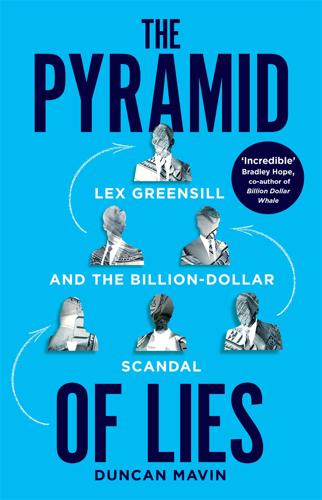
The Pyramid of Lies: Lex Greensill and the Billion-Dollar Scandal
by
Duncan Mavin
Published 20 Jul 2022
SIXTEEN The Vision Fund General Atlantic’s investment in Greensill had put Lex on the radar of SoftBank Group Corp’s Vision Fund, one of the biggest guns of global investing. It’s a rule of high finance that if one big financial firm does a deal, others will probably assume that their rivals did their work properly and follow suit. Masayoshi Son, the CEO of giant Japanese conglomerate SoftBank, had launched the $100 billion Vision Fund in 2017. He staked about $28 billion of SoftBank’s own money; Saudi Arabia’s sovereign wealth fund put up another $35 billion and about $15 billion came from Mubadala Investment Company, Abu Dhabi’s wealth fund.
…
At its head was a former Deutsche Bank executive named Rajeev Misra. Raised in Delhi, Misra studied at the Massachusetts Institute of Technology before embarking on a career on Wall Street. At Deutsche Bank, he had run a team of credit traders who profited from the crash in the US sub-prime mortgage market. He had developed a strong personal bond with Masayoshi Son since 2006, when he raised $16 billion in debt SoftBank needed for a large acquisition – the deal had helped make the SoftBank CEO a multibillionaire. Misra joined SoftBank in 2014. His rise to the top of the Vision Fund was described in scintillating detail by my former colleagues at The Wall Street Journal in an article that alleged Misra employed a series of dirty tricks to undermine his rivals for the role.
…
They bundled themselves into waiting cars and zipped across the city to SoftBank’s imposing headquarters. If the first meeting with Misra had got Lex officially in the door, then this meeting, in Japan, was critical. There were some of the same Vision Fund staff they’d met with before. But critically, Lex and Cameron also met with SoftBank CEO Masayoshi Son himself. Son is one of the most powerful, and unconventional, investors in the world. He encourages the Vision Fund to invest huge sums of money on companies, so long as they can promise to shoot for the moon. He also compensates his top executives handsomely. Many of the senior lieutenants in SoftBank earn tens of millions of dollars a year.

Blood and Oil: Mohammed Bin Salman's Ruthless Quest for Global Power
by
Bradley Hope
and
Justin Scheck
Published 14 Sep 2020
Cast of Characters The Al Saud King Salman bin Abdulaziz Al Saud, son of the kingdom’s founder and father of Mohammed bin Salman Crown Prince Mohammed bin Salman Al Saud Prince Khalid bin Salman Al Saud, Mohammed’s younger brother and former ambassador to the United States Sultana bint Turki Al Sudairi, King Salman’s first wife Fahdah bint Falah al-Hithlain, King Salman’s third wife and mother of Mohammed bin Salman Crown Prince Muqrin bin Abdulaziz Al Saud, King Salman’s half brother and briefly heir apparent Crown Prince Mohammed bin Nayef Al Saud, King Salman’s nephew and a longtime antiterrorism official close to the US government King Abdullah bin Abdulaziz Al Saud, King Salman’s half brother and predecessor Prince Miteb bin Abdullah Al Saud, King Abdullah’s son and former chief of the Saudi Arabia National Guard Prince Turki bin Abdullah Al Saud, the seventh son of King Abdullah Prince Badr bin Farhan Al Saud, a prince from a distant branch of the family, minister of culture, and a longtime friend of Mohammed bin Salman Prince Abdullah bin Bandar Al Saud, another prince and longtime friend of Mohammed bin Salman and head of the National Guard Prince Sultan bin Turki Al Saud, the son of one of King Salman’s brothers, and an outspoken prince whose criticisms got him into trouble with more powerful members of the family The Palace Khalid al-Tuwaijri, the head of King Abdullah’s Royal Court Mohammed al-Tobaishi, King Abdullah’s chief of protocol Rakan bin Mohammed al-Tobaishi, Mohammed bin Salman’s protocol chief and the son of Mohammed al-Tobaishi The MBS Entourage Bader al-Asaker, a longtime associate of Mohammed who runs his private foundation Saud al-Qahtani, an advisor to Mohammed who specializes in quashing dissent Turki Al Sheikh, a longtime companion of Mohammed who has brought foreign sports and entertainment events to Saudi Arabia The Region Mohammed bin Zayed Al Nahyan, crown prince of Abu Dhabi Tahnoon bin Zayed, Abu Dhabi national security advisor Tamim bin Hamad Al Thani, emir of Qatar Hamad bin Khalifa Al Thani, former emir of Qatar Abdel Fattah el-Sisi, president of Egypt Saad Hariri, prime minister of Lebanon Recep Tayyip Erdoğan, president of Turkey Residents of the Ritz Prince Alwaleed bin Talal Al Saud, a cousin of Mohammed and Saudi Arabia’s most prominent international businessman Adel Fakeih, a Saudi businessman who became minister of economy and planning Hani Khoja, a Saudi management consultant Mohammed Hussein Al Amoudi, a Saudi businessman with holdings in Ethiopia Ali al-Qahtani, a general Bakr bin Laden, scion of the bin Laden construction family The Critics Jamal Khashoggi, newspaper columnist with a long history of working for and sometimes criticizing the Saudi government Omar Abdulaziz, Canada-based dissident who criticizes Saudi leadership in online videos Loujain al-Hathloul, women’s rights activist who violated Saudi law by trying to drive into the kingdom from the United Arab Emirates The US Government President Donald Trump Jared Kushner, Ivanka Trump’s husband and an advisor to the president Steve Bannon, former Trump advisor Rex Tillerson, ex-CEO of ExxonMobil, later US secretary of state The Businessmen Jeff Bezos, founder and CEO of Amazon.com David Pecker, CEO of American Media, which publishes the National Enquirer Ari Emanuel, Hollywood agent and cofounder of Endeavor talent agency Masayoshi Son, CEO of Japanese tech investor SoftBank Rajeev Misra, head of SoftBank’s Vision Fund Nizar al-Bassam, Saudi deal maker and a former international banker Kacy Grine, independent banker and confidant of Alwaleed bin Talal A note on naming: In the Saudi convention, a man is identified through a patrilineal naming system.
…
In the grand marble lobby on October 30, the world’s biggest money manager, Blackstone founder Steve Schwarzman, held court in one corner, while Tony Blair stood in another expounding on Mohammed’s plans to a crowd of bankers. Investor Tom Barrack, a key Middle East advisor to President Trump and founder of Colony Capital, sat with his entourage, exchanging business cards with a stream of visitors. Trump Treasury chief Steve Mnuchin dined with his wife at Hong, the Ritz-Carlton’s high-end Chinese restaurant. Masayoshi Son, founder of Japan’s SoftBank, occupied one of the suites used days later to detain a prince. The startling juxtaposition between Davos in the Desert and the Ritz’s transformation into a prison—and the reversal of so many extraordinarily wealthy men’s fortunes—make the crackdown a singular event in recent world political and business history.
…
An arrogant financial engineer with a taste for debt and risk, Rajeev was a senior Deutsche Bank banker during the financial crisis, overseeing a team that eventually profited from betting against the housing market. He left soon after, making brief stops at UBS and Fortress Investment Group before landing at SoftBank. Rajeev had reconnected with Masayoshi Son, SoftBank’s technology-obsessed founder, at a wedding in Italy a few months earlier and subsequently accepted a job trying to help Masayoshi develop complex debt structures to fund his ambitions. The two had worked together years earlier when Rajeev helped Masayoshi raise $16 billion to buy Vodafone Japan in 2006.
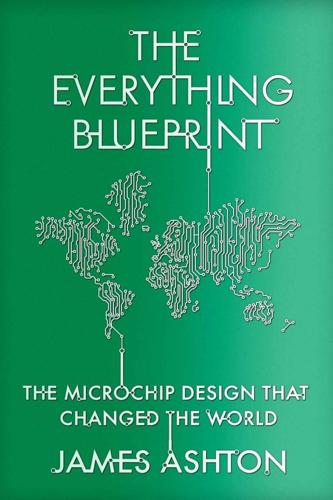
The Everything Blueprint: The Microchip Design That Changed the World
by
James Ashton
Published 11 May 2023
A 300-YEAR VISION, A 64-DAY TAKEOVER 1 Duncan Clark, Alibaba: The House that Jack Ma Built, Ecco, 2016. 2 https://www.reuters.com/article/alibaba-ipo-board-idINL4N0QK3Q120140827 3 Atsuo Inoue, Aiming High: Masayoshi Son, SoftBank, and Disrupting Silicon Valley, Hodder & Stoughton, 2021. 4 https://www.independent.co.uk/news/people/profiles/simon-segars-interview-looking-forward-future-and-internet-things-9789959.html 5 https://www.independent.co.uk/news/people/profiles/simon-segars-interview-looking-forward-future-and-internet-things-9789959.html 6 https://www.investegate.co.uk/arm-holdings-plc—arm-/rns/analyst-and-investor-day-2015/201509150700080227Z/ 7 https://www.mckinsey.com/business-functions/mckinsey-digital/our-insights/the-internet-of-things-the-value-of-digitizing-the-physical-world 8 https://asia.nikkei.com/Business/Companies/Masayoshi-Son-talks-about-how-Steve-Jobs-inspired-SoftBank-s-Arm-deal 9 Inoue, Aiming High, p. 270. 10 https://www.businesswire.com/news/home/20160621005758/en/SoftBank-to-Sell-Supercell-Stake-at-USD-10.2-Billion-Valuation 11 https://group.softbank/en/news/press/20150511_4 12 ‘SoftBank CEO Son plans to work at least 5 more yrs as Arora quits’, Japan Economic Newswire, 22 June 2016. 13 https://www.livemint.com/Companies/uzZ0D4e4DyjvqIUqETMbYP/The-trigger-for-Nikesh-Aroras-SoftBank-resignation.html 14 https://www.deepchip.com/items/0562-04.html 15 https://www.theresa2016.co.uk/we_can_make_britain_a_country_that_works_for_everyone 16 https://www.youtube.com/watch?v=ZzhYOPIelb4 17 https://www.enterprise.cam.ac.uk/a-call-to-arms/ 18 https://www.youtube.com/watch?v=d1S7Zk3eHdo 19 https://www.techinasia.com/masayoshi-son-softbank-40-year-dream-arm-acquisition 20 https://asia.nikkei.com/Business/Companies/Masayoshi-Son-talks-about-how-Steve-Jobs-inspired-SoftBank-s-Arm-deal 21 https://asia.nikkei.com/Business/Companies/Masayoshi-Son-talks-about-how-Steve-Jobs-inspired-SoftBank-s-Arm-deal 22 Personal view; British fund managers are too risk averse to back visionaries such as Elon Musk, writes James Anderson. The Daily Telegraph (London) 15 April 2017 23 https://www.youtube.com/watch?
…
There were four of them: Simon Segars, who in 2013 had become Arm’s third chief executive; his chairman, Stuart Chambers; Masayoshi Son, the billionaire Japanese investor whose portfolio of investments included Chinese ecommerce website Alibaba and the US mobile-phone carrier Sprint; and Alok Sama, chief financial officer of Son’s SoftBank investment company. They ordered lunch and chatted, like four friends relaxing on a summer Sunday afternoon. But for this hastily arranged meeting there was really only one thing on the menu: the future ownership of Arm, the UK’s most successful technology company. Animal Instincts Masayoshi Son had built a reputation for taking quick decisions.
…
May added that: ‘A proper industrial strategy wouldn’t automatically stop the sale of British firms to foreign ones, but it should be capable of stepping in to defend a sector that is as important as pharmaceuticals is to Britain.’15 Minutes after the speech ended, May’s only rival, Andrea Leadsom, pulled out of the race, and she was driven back to London, preparing to take charge of the country. Masayoshi Son was unperturbed by the tough talk or the latest political weather. Guided by his 300-year vision of the future, he flew into London the following day to secure his prize. By 18 July he was striding into Downing Street, grinning and shaking hands with Hammond on the steps, accompanied by Stuart Chambers, Arm’s chairman.
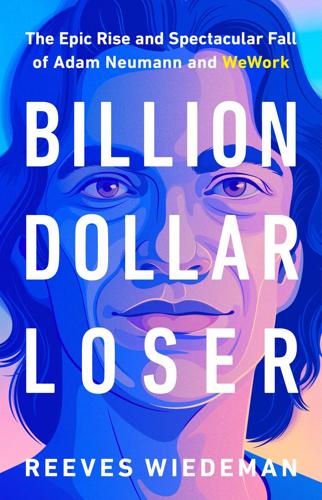
Billion Dollar Loser: The Epic Rise and Spectacular Fall of Adam Neumann and WeWork
by
Reeves Wiedeman
Published 19 Oct 2020
The company had tapped into a desire, especially strong among young workers, for an in-office experience more fulfilling than the one their parents’ cubicles offered. The company’s revenue had more or less doubled every year for a decade, and Neumann had raised more than $11 billion of investment capital. The vast majority came from Masayoshi Son, the founder of SoftBank, a Japanese technology conglomerate, and one of the few executives in the world whose ambition exceeded Neumann’s. Son had first invested in WeWork in 2017, partly through the Vision Fund, a $100 billion venture capital bazooka funded primarily by the Saudi Arabian government.
…
Elizabeth Holmes, another once-lauded start-up founder, was revealed to be a fraudster who promised something her company, Theranos, couldn’t deliver. Spreadsheets were out; megalomania was in. For all of WeWork’s success, its employees had followed the Theranos story with a growing sense of unease as cracks began to appear in WeWork’s ever-optimistic narrative. SoftBank’s investment was gargantuan by any measure, but Masayoshi Son, Neumann’s chief advocate and business mentor, had backed out of an even larger deal at the end of 2018, as the blistering economy of the previous decade showed signs of quavering. Neumann’s company spent so much money expanding around the world in 2018 that it lost nearly $2 billion, and even his employees didn’t know exactly what it meant to say that they were now trying to elevate the world’s consciousness.
…
The frothiness of the start-up economy was so extreme that Miguel’s projection wasn’t entirely unreasonable. The value of the S&P 500 tripled in the latter half of the ’90s, with new companies appearing each week and claiming to harness the nascent power of the internet to disrupt one industry after another. In 2000, a few well-placed tech bets allowed Masayoshi Son, from SoftBank, to rise from relative obscurity and briefly become the world’s richest man. Even as the internet bubble began to burst, Hayden and McKelvey believed they were well positioned compared to other upstarts. “Unlike online bookstores, English, baby! can’t be easily duplicated by merely walking down the street to the nearest book vendor,” an Oregon newspaper wrote about the start-up in 2000.
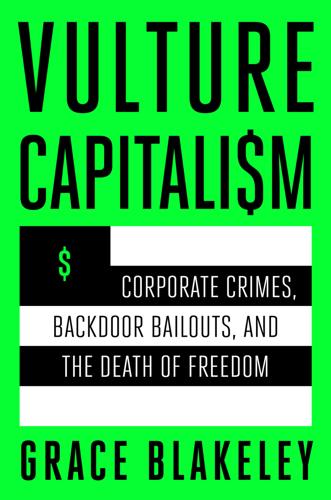
Vulture Capitalism: Corporate Crimes, Backdoor Bailouts, and the Death of Freedom
by
Grace Blakeley
Published 11 Mar 2024
Sheryl Wudunn, “MEDIA; An Entrepreneurial Exception Rides the Internet in Japan,” New York Times, July 26, 1999, https://www.nytimes.com/1999/07/26/business/media-an-entrepreneurial-exception-rides-the-internet-in-japan.html. 6. Ibid. 7. Alan M. Webber, “Japanese-Style Entrepreneurship: An Interview with Softbank’s CEO, Masayoshi Son,” Harvard Business Review, January–February 1992, https://hbr.org/1992/01/japanese-style-entrepreneurship-an-interview-with-softbanks-ceo-masayoshi-son. 8. “Who Has Lost the Most Money in Human History?,” The Spectator, November 19, 2022, https://www.spectator.co.uk/article/who-has-lost-the-most-money-in-human-history/. 9. Alex Konrad, “WeWork Confirms Massive $4.4 Billion Investment From SoftBank and Its Vision Fund,” Forbes, August 24, 2017, https://www.forbes.com/sites/alexkonrad/2017/08/24/wework-confirms-massive-4-4-billion-investment-from-softbank-and-its-vision-fund/. 10.
…
In the wake of a financial crisis that had witnessed the collapse of many financial and real estate giants alongside the dramatic rise of “big tech,” this perception allowed WeWork to attract large amounts of cash, facilitating its expansion to multiple American and eventually European cities. By 2016, WeWork was worth $10 billion and featured on Fortune’s list of “unicorns”—private companies worth more than $1 billion.4 Enter Masayoshi Son, infamous founder of the Japanese financial institution SoftBank, known for investing with his gut and making big wins as well as some massive losses. Son was raised in a poor family of Zainichi Koreans—early Korean migrants to Japan—who eventually made enough money to send Son to school by selling illegal sake.5 At age sixteen, Son moved to the US to finish high school, after which he studied at Berkeley in California.6 While at Berkeley, he developed a fascination with computing technology and started several successful small tech businesses.7 Son invested the money he made from these early businesses during the tech bubble through his new company, SoftBank.
…
The most significant factor explaining WeWork’s ability to avoid complete collapse was the bailout from SoftBank, which ended up losing about 90 percent of its initial investment after write-downs.25 There was a viable business at the core of WeWork, but in almost any other scenario the staggering corruption and mismanagement that took place under Neumann would have forced the company into insolvency, allowing a better-run competitor to buy up its assets. Masayoshi Son bought WeWork time, and this is what allowed it to restructure itself into a viable (and much smaller) corporation. Though doubts still remain as to the company’s ability to survive much longer, even after all this external support. As the twentieth-century renegade economist Hyman Minsky noted, companies face a “survival constraint,” which makes access to cash one of the most important factors in determining which ones last.26 Powerful financial institutions are not simply responding to wider economic conditions; they play a role in shaping those conditions by buying time for those they support.
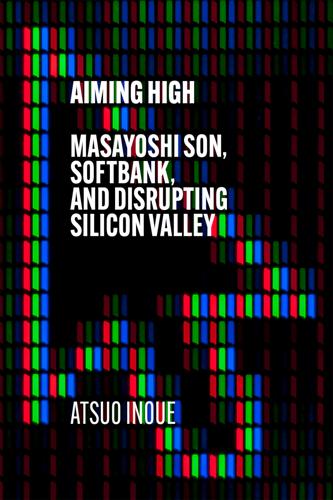
Aiming High: Masayoshi Son, SoftBank, and Disrupting Silicon Valley
by
Atsuo Inoue
Published 18 Nov 2021
In 1986, he was one of the first Japanese journalists to interview Bill Gates and Ted Turner. The first time he interviewed Masayoshi Son was in 1987 and has since covered him closely for more than 30 years. While living in the USA, he interviewed many celebrities including Irving Wallce, Muhammad Ali, George Harrison, and Jeffrey Archer. Over the course of his successful career, he has published numerous books including The Mentalities and Mindsets of Entrepreneur Masayoshi Son, Tokaton – Masayoshi Son Monogatari. Aiming High Masayoshi Son, SoftBank Group, and Disrupting Silicon Valley Atsuo Inoue www.hodder.co.uk First published in Great Britain in 2021 by Hodder & Stoughton An Hachette UK company KOKORAZASHI TAKAKU: SON MASAYOSHI SEIDEN Copyright © Atsuo Inoue 2021t All rights reserved.
…
Waiting for the pair at the Ziff-Davis head office on 5th Avenue in New York was William Ziff, and it took the parties all of 10 minutes to formalise proceedings (an hour or more is normally scheduled for this sort of thing). As of May of that year, 50,000 copies of the Japanese version of PCWeek would be published each week. Ziff would later comment to Hashimoto that he had only known three bona fide geniuses in his entire life: Bill Gates, Steve Jobs and Son Masayoshi. Son in turn would confide in Hashimoto during this trip that he wanted to buy Ziff’s company one day – which at the time Hashimoto took as a joke, such was the absurdity of his proposal. And yet, the third genius’s eyes were deadly serious: he knew his own American dream was bound to come true sooner or later, which it eventually did in November of 1994, when he acquired Ziff-Davis.

The Future Is Faster Than You Think: How Converging Technologies Are Transforming Business, Industries, and Our Lives
by
Peter H. Diamandis
and
Steven Kotler
Published 28 Jan 2020
“I totally believe [in] this concept,”: Sam Shead, “The Japanese Tech Billionaire Behind Softbank Thinks the ‘Singularity’ Will Occur Within 30 Years,” Business Insider, February 27, 2017. See: https://www.businessinsider.com/softbank-ceo-masayoshi-son-thinks-singularity-will-occur-within-30-years-2017-2. The Vision Fund got started: “Masayoshi Son Prepares to Unleash His Second $100bn Tech Fund,” Economist, March 23, 2019. See: https://www.economist.com/business/2019/03/23/masayoshi-son-prepares-to-unleash-his-second-100bn-tech-fund. Force #3: Demonetization Ilumina’s latest generation sequencer: Sarah Buhr, “Illumina Wants to Sequence Your Whole Genome for $100,” TechCrunch, January 10, 2017.
…
Traditionally, SWFs have invested money in public equities, infrastructure and natural resources, but as the economic promise of startups continues to climb, these funds are increasingly hunting outsized returns on entrepreneurial shores. In 2017, according to the Sovereign Wealth Lab research center at Madrid’s IE Business School, forty-two SWF deals valued at around $16.2 billion flowed in this direction. And this pales beside Softbank CEO Masayoshi Son’s mega-fund, the “Vision Fund.” Driven by his belief in the “Singularity”—Ray Kurzweil’s idea that developments in AI will lead to unprecedented technological growth and unfathomable changes for civilization—Son decided to try to accelerate this process. “I totally believe [in] this concept,” he said in a recent speech.

Super Pumped: The Battle for Uber
by
Mike Isaac
Published 2 Sep 2019
Twitter, July 27, 2017, 10:05 p.m., https://twitter.com/megwhitman/status/890754932990763008. 315 the firm filed a lawsuit: Mike Isaac, “Uber Investor Sues Travis Kalanick for Fraud,” New York Times, August 10, 2017, https://www.nytimes.com/2017/08/10/technology/travis-kalanick-uber-lawsuit-benchmark-capital.html. 315 “We do not feel it was either prudent”: Mike Isaac, “Kalanick Loyalists Move to Force Benchmark Off Uber’s Board,” New York Times, August 11, 2017, https://www.nytimes.com/2017/08/11/technology/uber-benchmark-pishevar.html. 317 He bankrolled his college years: Cyrus Farivar, “How Sprint’s New Boss Lost $70 Billion of His Own Cash (and Still Stayed Rich),” Ars Technica, October 16, 2012, https://arstechnica.com/information-technology/2012/10/how-sprints-new-boss-lost-70-billion-of-his-own-cash-and-still-stayed-rich/. 317 He returned to Japan: Andrew Ross Sorkin, “A Key Figure in the Future of Yahoo,” Dealbook, New York Times, December 13, 2010, https://dealbook.nytimes.com/2010/12/13/a-key-figure-in-the-future-of-yahoo/. 317 “crazy guy who bet on the future”: Walter Sim, “SoftBank’s Masayoshi Son, the ‘Crazy Guy Who Bet on the Future,’ ” Straits Times, December 12, 2016, https://www.straitstimes.com/asia/east-asia/softbanks-masayoshi-son-the-crazy-guy-who-bet-on-the-future. 317 He designed the investment vehicle for speed: Dana Olsen, “Vision Fund 101: Inside SoftBank’s $98B Vehicle,” PitchBook, August 2, 2017, https://pitchbook.com/news/articles/vision-fund-101-inside-softbanks-93b-vehicle.
…
If Benchmark were off the board, it would give Kalanick the room he needed to return as CEO. More than a clever stalling tactic, it might have actually worked. As Kalanick, Gurley and their allies traded blows in public, a new figure was circling like a vulture over the company, drawn by the smell of money. That figure was Masayoshi Son. Known more colloquially by the business world as “Masa,” Son was the founder and CEO of SoftBank, a Japanese mega-conglomerate with stakes in some of the world’s most successful finance, telecommunications and technology companies. He also happened to take a “madman” approach to the world of business; rivals could never predict Masa’s strategy, could never guess his next move.
…
The thing that finally severed Kalanick from his leadership of Uber wasn’t the vote to name Dara Khosrowshahi as CEO, nor was it Gurley’s lawsuit against him for defrauding investors. It was a deal that would come months later, in the form of what Gurley called “the Grand Bargain,” courtesy of SoftBank and Masayoshi Son. In December, Son reached a deal with Khosrowshahi and Uber’s board, in which SoftBank would purchase some 17.5 percent of Uber’s overall shares in what was called a tender offer, a way for outsiders to buy stock from existing shareholders in the company. The SoftBank shares would come from a group of people, including employees who were long waiting to sell but couldn’t due to Kalanick’s restrictions.

Earth Wars: The Battle for Global Resources
by
Geoff Hiscock
Published 23 Apr 2012
SunPower CEO Tom Werner offered the bullish view that the alliance would “change the way the world is powered” (see Exhibit 8.2).6 Exhibit 8.2 Top 10 solar module producers (by MW shipped in 2010) *Joint venture between Hanwha of South Korea and Solarfun Power of China. ** In 2011, French oil major Total agreed to buy 60 percent of SunPower for about US$1.3 billion. Source: PVinsights, May 2011 In Japan, Masayoshi Son, the one-time Internet investment pioneer turned telecom corporate stalwart, is directing his own multi-billion dollar fortune to the pursuit of solar power. Son, whose company SoftBank is the No. 3 mobile phone operator behind NTT DoCoMo and KDDI Corp., has set up the Japan Renewable Energy Foundation to work on his proposed renewable energy project encompassing at least ten solar plants, each of 20 MW.
…
It has a concentrated solar power generation venture with the Abu Dhabi government, a photovoltaic cell project, a biomass to liquid process, and a wind power business in Japan. SoftBank’s “New Energy” Vision One company that does not yet figure in a list of Japan’s biggest energy producers is Internet and mobile phone conglomerate SoftBank, the group created by the billionaire maverick entrepreneur Masayoshi Son. But if Son gets his way, that may change. He wants Japan to shift 60 percent of its electricity requirements to renewable energy sources over the next 20 years, cut down on nuclear power, and build a Japan “super-grid” that would move power around the country, with an expansion eventually to the Asian mainland.
…
The extensive debate about energy that emerged in the aftermath of the disaster has made me keenly aware of something that is obvious, but easily taken for granted: that telecommunications, and the information revolution itself, depend by their very nature upon the availability of energy. . . in pursuit of our vision we have therefore started a new initiative to examine the possibilities of developing a business around power generation from renewable energy sources. —Masayoshi Son, Internet entrepreneur and SoftBank founder, August 2011 Indicative of Son’s approach is his suggestion that farmland contaminated by seawater from the tsunami be revitalized not for agriculture but as an “East Japan Solar Belt” that would create jobs and exploit Japan’s capability in solar technology.
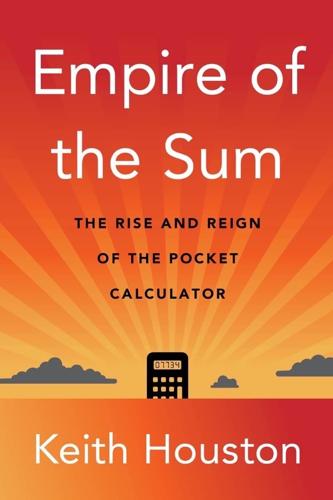
Empire of the Sum: The Rise and Reign of the Pocket Calculator
by
Keith Houston
Published 22 Aug 2023
Hittinger, “Metal-Oxide-Semiconductor Technology,” Scientific American 229, no. 2 (September 30, 1973): 48–59. 10 Tout, “Sharp QT-8D.” 11 Takashi Sugimoto and Tomomi Kikuchi, “Obituary: ‘Rocket Sasaki,’ Executive at Sharp and Mentor to Masayoshi Son,” Nikkei Asia (Nikkei, February 15, 2018), https://asia.nikkei.com/Business/Obituary-Rocket-Sasaki-executive-at-Sharp-and-mentor-to-Masayoshi-Son. 12 Lojek, History of Semiconductor Engineering, 359–360. 13 Aspray, “Interview with Tadashi Sasaki,” sec. Microprocessors and Busicom. 14 Kadokura, “Chronology of Japanese Calculating Machines”; “Operator’s Manual for Busicom HL-21 Hand-Operated Calculator” (Tokyo: Busicom Computer Corporation, n.d.), 1. 15 “Manual for Busicom HL-21.” 16 Serge Devidts, “Busicom 161 (Version-1),” Calcuseum, June 19, 2020, http://www.calcuseum.com/SCRAPBOOK/BONUS/44984/1.htm; Rick Bensene, “Nippon Computing Machine Co.
…
Then, in 1959, Fairchild’s Robert Noyce combined two breakthroughs—an improvement in chip fabrication pioneered by his colleague Jean Hoerni, and his own novel process* for depositing electrical circuits directly onto silicon chips—to transform the integrated chip from a hand-soldered curiosity to a mass-produced commodity.6 The Japanese semiconductor industry leaned heavily on Noyce’s “planar” technique, and Sasaki’s own rise at Sharp owed much to his licensing of it.7 “Rocket” Sasaki was a formidable figure in his own right.8 He had persuaded Rockwell, an American semiconductor firm, to gamble on a new type of low-power, high-density microchip and had negotiated an exclusive contract to buy Rockwell’s production of such chips.9 These metal-oxide semiconductor large-scale integrated chips—MOS LSI, for short—powered Sharp’s handheld QT-8D and QT-8B calculators and helped make them persuasive alternatives to Canon’s Pocketronic.10 Sasaki would go on to become a doyen of Japan’s electronics industry, with both Apple’s Steve Jobs and Masayoshi Son of Japan’s giant SoftBank conglomerate happy to call him a mentor.11 For now, though, Sasaki had bad news for his guests. Sharp’s deal with Rockwell forbade the Japanese company from buying chips from anyone else, even the one and only Robert Noyce.12 But perhaps Sasaki could help in another way.
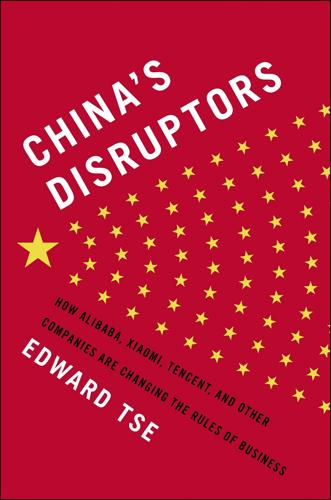
China's Disruptors: How Alibaba, Xiaomi, Tencent, and Other Companies Are Changing the Rules of Business
by
Edward Tse
Published 13 Jul 2015
he persuaded Goldman Sachs to buy 23 percent of the company: Although Goldman Sachs subsequently sold its stake, Softbank held on to its shares, seeing them rise to be worth more than $58 billion as Alibaba prepared its initial public offering. See Bruce Einhorn, “Masayoshi Son’s $58 Billion Payday on Alibaba,” Bloomberg Businessweek, May 7, 2014, available at http://www.businessweek.com/articles/2014-05-07/masayoshi-sons-58-billion-payday (accessed September 9, 2014). orders placed through Alibaba Web sites account for around 70 percent of all package deliveries: See Lulu Yilun Chen, “Alibaba Earnings Surge Boosts Valuation Ahead of IPO,” Bloomberg, April 16, 2014, available at http://www.bloomberg.com/news/2014-04-15/alibaba-profit-grows-ahead-of-initial-public-offering.html (accessed September 9, 2014).

Collision Course: Carlos Ghosn and the Culture Wars That Upended an Auto Empire
by
Hans Gremeil
and
William Sposato
Published 15 Dec 2021
In all, industry figures show that direct investment since 1982 totaled $51 billion.11 All of this created 24 manufacturing plants, 45 research and development design facilities, and 39 distribution centers across 28 states. It was a success story for all involved and played a key role in cementing the Japanese presence in the market. But the awards for Japan’s best and worst overseas investments do not come from the auto industry. They both go to one person, the flamboyant technology entrepreneur Masayoshi Son. Born in southern Japan to Korean parents, Son spent $20 million in early 2000 to invest in the then-fledgling Chinese internet shopping site Alibaba. By 2020, even after selling off part of the initial 34 percent stake, his holdings were worth an estimated $150 billion, a return of somewhere around 749,900 percent.
…
The US hedge fund ValueAct Capital worked with the previously scandal-hit medical equipment group Olympus in 2019,26 winning seats on the board and helping with a business transformation that sent shares sharply higher. It didn’t hurt that by this time, a majority of the Olympus board was from outside the company with a greater concern for the shareholders and less worried about internal sacred cows. Elliott made headway in persuading Masayoshi Son and his SoftBank group to sell part of its own vast shareholdings to buy back shares and pay back debt in March 2020.27 That prompted the shares to jump 55 percent in just a week, handing Elliott a tidy paper profit. Pickens would have been proud. All of this contributed to a flood of new money from overseas, looking for new bargains.
…
Japan Inc., however, was predisposed to giving the executives in charge of daily operations a freer hand—they were, after all, the experts fully immersed in the nitty-gritty of the business. Japan also puts more faith in company founders—and their families—for having the incentive, if not the raw talent and know-how, to do what’s right for their companies in the long run. Masayoshi Son, the founder of Japanese mobile phone and technology company SoftBank, the first purveyor of the Apple iPhone in Japan, keeps his hand on the wheel after nearly four decades. Tadashi Yanai founded the company that became Japan’s answer to the US casual clothes chain the Gap. Even after turning seventy, Yanai still reported to work at 6:30 A.M. every day, directly calling the shots at Fast Retailing and its hip, ubiquitous UNIQLO stores, as chairman, president, and CEO.
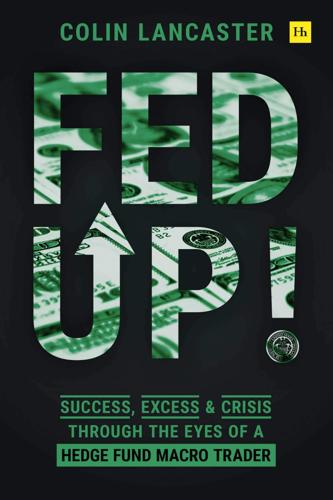
Fed Up!: Success, Excess and Crisis Through the Eyes of a Hedge Fund Macro Trader
by
Colin Lancaster
Published 3 May 2021
Just look for the scarf. We are sitting at our normal table in the restaurant, waiting for the food to arrive. A headline has just hit on WeWork, and all of us are checking our phones. WeWork is run by a guy named Adam Neumann, and its largest shareholder is a company called SoftBank, run by Masayoshi Son.5 SoftBank has been pouring money into fast-growing tech companies. Masa Son famously lost $70 billion, the most money lost in stock market history, during the dotcom bust. He’s back at it again and swinging for the fences. WeWork is his new crown jewel and is considered one of the unicorns. Unicorns are high-flying growth companies with valuations in excess of $1 billion, companies that don’t actually make any money.
…
Tom Petters was convicted in 2009. 4 An International Swaps and Derivatives Association (ISDA) agreement is what makes Wall Street tick. Most derivative products, which use leverage (i.e., borrow money), require the use of these agreements to establish the legal and credit terms. They are very important to Wall Street traders. 5 Masayoshi Son, referred to as Masa Son by the media, is also the founder of SoftBank. He was named by Forbes as one of the most powerful people in the world. 6 A thank you to Michael Lewis and Liar’s Poker for this. 7 Cash for Clunkers was a $3 billion US federal program intended to provide economic incentives to US residents to purchase new, more fuel-efficient vehicles when trading in an older model.
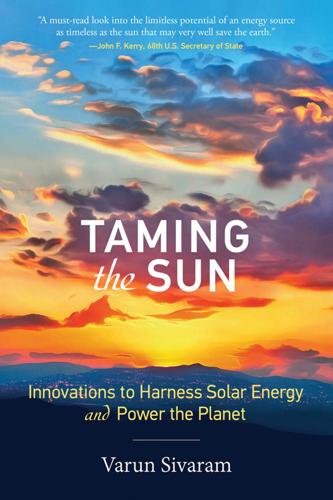
Taming the Sun: Innovations to Harness Solar Energy and Power the Planet
by
Varun Sivaram
Published 2 Mar 2018
Although electric power companies looking to diversify from fossil fuels are the most likely candidates for solar supermajors, they are not the only corporate players tempted by solar power. A recent entrant to the industry, the Japanese technology giant Softbank, has made an enormous bet on solar power. Led by Japan’s richest man, Masayoshi Son, Softbank leaped into solar after Japan’s Fukushima disaster, developing 500 MW of solar in the country and then pledging $20 billion to invest in India. In late 2015, I sat down in New Delhi with the CEO of Softbank’s energy subsidiary, Raman Nanda, a tall, charismatic, Oxford-educated McKinsey veteran.
…
The “Global Energy Interconnection,” as they called it, would cost $50 trillion, link every continent with undersea transmission lines, and power the globe with clean energy. Windmills on the North Pole and solar panels in the Sahara Desert would export their power to run the world’s megacities. And oh, by the way, this supergrid would also secure world peace and harmony. At least one half of the odd couple had made a habit of proposing audacious goals. For Masayoshi Son—the second-richest man in Japan, where as something of a celebrity, he is often called just “Masa”—the supergrid is his latest superlative. Masa has also set his sights on turning Softbank, the conglomerate he leads, into a business empire that will last 300 years, and in 2017, he launched a mammoth, $100 billion fund to invest in the tech sector.
…
All of this means that perhaps Masa and Liu, the visionaries behind the global supergrid, actually weren’t thinking big enough to envision going beyond even a supergrid to a hybrid grid. Or rather, they weren’t thinking both big and small enough. Notes 1. Schumpeter, “Sonic Boom,” The Economist, April 1, 2017, http://www.economist.com/news/business/21719842-risk-one-japans-greatest-tech-tycoons-his-messianic-streak-masayoshi-son-goes?frsc=dg%7Cd. 2. Leo Lewis, Kana Inagaki, and Simon Mundy, “SoftBank: Waiting for the Next ‘Big Idea,’” Financial Times, July 13, 2016, https://www.ft.com/content/213582f2-453e-11e6-9b66-0712b3873ae1. 3. John Boyd, “Trio of Nations Aims to Hook Asia Super Grid to Grids of the World,” IEEE Spectrum: Technology, Engineering, and Science News, September 13, 2016, http://spectrum.ieee.org/energywise/energy/the-smarter-grid/trio-of-nations-aim-to-hook-asia-super-grid-to-grids-of-the-world. 4.
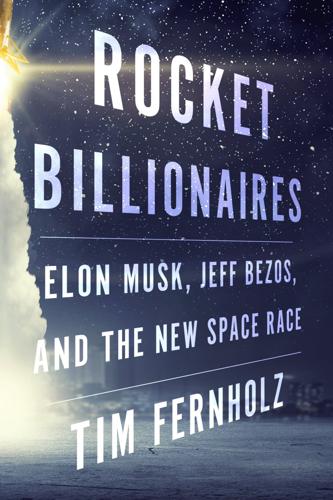
Rocket Billionaires: Elon Musk, Jeff Bezos, and the New Space Race
by
Tim Fernholz
Published 20 Mar 2018
(Like rockets, most satellites are assembled by hand in clean rooms, which is one reason for their expense.) Intelsat, another major operator in communications satellites, invested as well, perhaps hoping to ape SES’s successful incorporation of O3b into its collection of space assets. In 2016, OneWeb would win its own $1 billion investment from the Japanese conglomerate SoftBank, whose tycoon CEO, Masayoshi Son, was spearheading a $100 billion technology investment fund. And, because every space venture needs a space billionaire, Richard Branson threw his hat in the ring, investing in OneWeb through Virgin Group and joining its board. The deal also entailed a contract to launch ten of the satellites on Virgin Orbit, a subsidiary of Virgin Galactic that would be spun out in 2017.
…
See also Atlas V; Titan IV rocket financial failures, 32–33 joint venture with Russian state rocket company, 59 NASA space taxi program bid, 113 Proton rocket, 171–73 X-33 failure, 226 Low, George, 136, 151 Lueders, Kathy, 165, 168 Luxembourg, 174–75 commercial satellite backers, 52 M; MacDonald, Alexander, 47–48 Mars, travel to, x, 54, 58, 197–98, 243–44 financing issue, 46–49 history of interest in, 48 Mars Curiosity rover, 198 motivation for, 47–48 pro-ams in Mojave desert, 50–51, 58 “Red Dragon” program, 41–42, 44 Mars Society, 45 Marty, Alan, 113, 167 Masayoshi Son, 234 Maser, James, 99–100, 118, 131, 192 McAuliffe, Christa, 23 McCain, John, 185, 186, 190, 192 McCaw, Craig, 2 McDonnell Douglas, 18, 27, 69, 125. See also Boeing; DC-X, prototype reusable orbital rocket; Delta II rocket orbital rocket contract, 19 McGregor, Texas, 87–88, 137, 225, 248 Melvill, Mike, 95–96 Merlin rocket, 92, 113, 153, 165 Block V engineering for CCDEV, 165 design upgrades, 90 development of, 87–88, 108 engineering design, 134–35 in the Falcon 1, 133–34 Metzger, Phil, 68 Meyerson, Rob, 124 Microcosm, 64, 66 Microsoft, 2, 27 Mikulski, Barbara, 143 Millennium Falcon, 81 Mir (Russian space station), 53 Mojave Desert, 50, 63, 87, 211 Mojave Desert Advanced Rocket Society, 51 moon and moon landing debate on exploration, 243–44 manned lunar orbit and outpost, 244 motivation for, 242–43 NASA public-private lunar research, 244 South Pole’s Shackleton Crater, 241–42 volatiles, 240–41 Moon Express, 242, 244 Mosdell, Brian, 20–22, 146 Mueller, Tom, 54, 62–63, 66, 87–90, 108, 192, 243 Muilenburg, Dennis, 244 Musk, Elon, x, 1.

The Optimist: Sam Altman, OpenAI, and the Race to Invent the Future
by
Keach Hagey
Published 19 May 2025
This particular year, despite a healthy economy and the usual splendid weather, the conference was permeated by a sense of dread, as the big players in media seemed increasingly desperate to sell themselves off to some tech company or another before the profits fully leaked out of their business, thanks to competition from the likes of Netflix. As if to troll the legacy types, SoftBank founder Masayoshi Son arrived and declared to reporters, “I’m not interested in traditional media.”20 Apple’s Tim Cook and Facebook’s Sheryl Sandberg echoed his sentiments the following day. Jeff Bezos, not yet divorced but in the midst of making himself over, strutted between boutique pop-up shops, his muscles bulging improbably.
…
Louis, 26, 45 Lagorio-Chafkin, Christine, 161 LaMDA (Language Models for Dialog Application), 270–71 “land value tax,” 256 large language models (LLMs), 16–17, 218, 221, 244–46, 252–53, 270–71, 275 Larsen, Thomas, 301 Latino people and communities, 21, 35 Lattice (startup), 311 Launch Pad: Inside Y Combinator, The (Stross), 133 Leap Motion, 226 LeCun, Yann, 169, 184, 188 Lee, Jennifer 8., 217 Lee, Kai-Fu, 267 Lee, Wing, 78–80 Legg, Shane, 145–46, 168 Lehane, Chris, 205, 274, 292 Lehman Brothers collapse, 116 Leike, Jan, 264, 284, 305–6, 308 Lemoine, Blake, 271 Lemon, Steve, 119, 121 Leone, Doug, 87, 112 Lessin, Jessica, 185 LessWrong (blog), 4, 176, 212, 301 Levchin, Max, 136 “levers” of change, 154 Levie, Aaron, 96 Levy, Carolynn, 86, 94, 232 Levy, Daniel, 309 Levy, Jon, 94, 232–33 LGBTQ people, 43, 50 Li, Fei-Fei, 184 liberalism, 314 libertarianism, 131, 142, 145 Library Genesis (LibGen), 244 Life 3.0: Being Human in the Age of Artificial Intelligence (Tegmark), 168 Life in Seven Songs podcast, 134, 198, 275 Lightcap, Brad, 293 Lightspeed Grants, 301 LightSurf photo sharing software, 79 limited partners (LPs), 72, 136, 124, 151, 155, 159, 234, 236, 281 Lin, Alfred, 161 Lincoln Park neighborhood of Chicago, 36 Lindsay, Neil, 100 LinkedIn, 223, 234 Lisp programming language, 63, 69, 124, 151 Liu, Min, 96, 107, 114–15 Livingston, Jessica, 63–65, 71–75, 81, 94–95, 122, 151, 157, 187, 232, 235–36 lobbying, 109, 144, 179, 274, 292, 300–301 Local Initiatives Support Corporation (LISC), 34–35, 40 location-based services, 58–59, 106–7, 118–19 Dodgeball location-based app, 104, 105, 118 enormous infrastructure costs of, 119 Foursquare, 118–20, 126 see also mobile phones Loopt, 16, 96, 101–17, 118–23, 126–28, 133, 138, 150–51, 159, 216, 229–31 Los Alamos National Laboratory, 170 Lourd, Bryan, 307–8 Lowe, Rob, 292 Lowe, Ryan, 265 Lowell, MA, 35 Low-Income Housing Tax Credit program, 22, 35 Lu, Qi, 230–31 Ludacris, 102 MacArthur “genius grant,” 81 MacAskill, William, 211–12 Machine Intelligence Research Institute, 210, 301 machine superintelligence, 143, 145, 164, 167, 170, 177, 309, 315, see also AI (artificial intelligence) machine translation, 168, 219, 245 Macron, Emmanuel, 14, 274 Magic: The Gathering card game, 76 Mahoney, Ryan, 312 Mailliard, Page, 85–86, 88–89, 91, 93–95, 122 Makanju, Anna, 274 malaria prevention, 212, 266 “Malicious Use of Artificial Intelligence, The” (Toner), 241–42 “Manhattan Project” for AI, 8, 145, 147, 219 Manson, Richard, 29 Mar-a-Lago, 40 Marciniak, Brian, 97, 98, 105 Marcus, Gary, 268 Mars, colonizing, 147, 170–71 Martin, James, 165 Masayoshi Son, 229 masculinity, see tech bros Mashable (news site), 119 Masters, Blake, 132 “math envy,” 180 Matheny, Jason, 267, 299 Matrix Partners venture firm, 90 McAdoo, Greg, 86–92, 95, 97–98, 112–16, 119–26, 155, 231 McCain, John, 296–97 McCauley, Matthew, 209 McCauley, Tasha, 209–11, 234, 276, 286, 288, 299 McCaw Cellular, 90 McGrew, Bob, 217–18, 283, 286, 287, 310 McIntyre, Robert, 258 McKinsey, 61–62, 150, 158 Medicare for All, 206 “Meditations on Moloch” (S.

The Future Is Asian
by
Parag Khanna
Published 5 Feb 2019
Asian regulators are also adopting central counterparty clearinghouses (CCPs) as part of the G20 capital market reforms. 26 Preqin, “Preqin Special Report: Asian Private Equity & Venture Capital,” Sept. 2017, http://docs.preqin.com/reports/Preqin-Special-Report-Asian-Private-Equity-and-Venture-Capital-September-2017.pdf. 27 Crunchbase, Global Innovation Investment Report: 2016 Year in Review, https://static.crunchbase.com/reports/annual_2016_yf42a/crunchbase_annual_2016.pdf. 28 Apple also made a $1 billion investment in DiDi in 2017. 29 Judith Balea, “Grab’s Anthony Tan on His Unforgettable Meeting with Masayoshi Son, brotherhood with Didi,” Tech in Asia, May 25, 2017; https://www.techinasia.com/grab-anthony-tan-on-his-unforgettable-meeting-with-masayoshi-son-and-brotherhood-with-didi. 30 India’s trade in and consumption of gold is mostly private, while China’s is mostly public, given that it is the world’s largest producer and consumer of gold. 31 Philip J. Landrigan. Richard Fuller, Nereus J.

Power Play: Tesla, Elon Musk, and the Bet of the Century
by
Tim Higgins
Published 2 Aug 2021
The lessons of 2008 and 2013 should’ve been obvious: Any sort of delay could knock over the fragile financial house that Tesla had built and eat into what limited cash it had. * * * — Concurrent with all this, a massive new venture capital fund was being created by SoftBank, the Japanese tech conglomerate with stakes in Alibaba, Sprint, and others. CEO Masayoshi Son was on the verge of controlling a nearly $100 billion fund that was intended to rewrite the rules of investing in Silicon Valley and pick world-changing winners, infusing them with the kinds of cash that a generation ago would’ve seemed impossible in the private market. Goldman thought a meeting between Musk and Son might be fruitful.
…
More than two hours after the first tweet, he elaborated on his reasoning: “Hope all shareholders remain. Will be way smoother & less disruptive as a private company. Ends negative propaganda from shorts.” The next day the Securities and Exchange Commission opened an investigation. * * * — Musk and Masayoshi Son of SoftBank may not have hit it off, but after the heady dinner that Musk’s friend and investor Larry Ellison had assembled at the Fremont factory in March 2017, the Saudis had kept in touch with Musk. As his war with the short sellers moved through July 2018, the fund requested a meeting. Musk met with them on Tuesday evening, July 31, a day ahead of announcing Tesla’s second-quarter results, in which he promised to continually turn a profit going forward, and a week before the tweet heard around the internet.
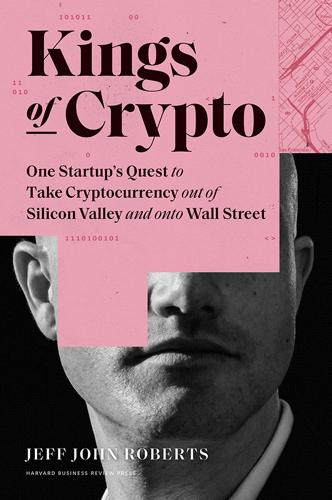
Kings of Crypto: One Startup's Quest to Take Cryptocurrency Out of Silicon Valley and Onto Wall Street
by
Jeff John Roberts
Published 15 Dec 2020
• • • A burst of investment in crypto in early 2018, such as Peter Thiel’s $20 million bet, convinced some that the bubble hadn’t burst, but by May it became clear that the good times were over. Retail investors who had made smaller bets on crypto felt the pain first; the big players came next. Masayoshi Son, the founder of Japanese conglomerate SoftBank, had also bought at the top of the bitcoin market only to take a drubbing to the tune of $130 million when he sold off his position months later. Goldman Sachs, the investment bank whose aversion to tech had led Fred Ehrsam to quit in frustration, had finally, it appeared, come around to bitcoin.
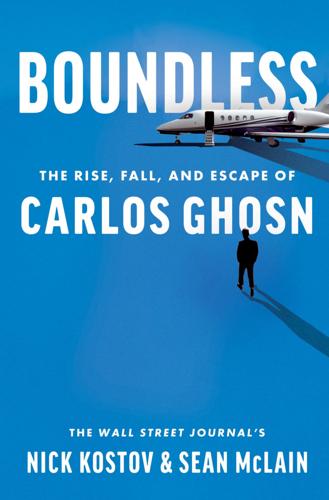
Boundless: The Rise, Fall, and Escape of Carlos Ghosn
by
Nick Kostov
Published 8 Aug 2022
These weren’t just comic books for kids—manga strips about successful entrepreneurs were what young salarymen read for inspiration during their commute. If Ghosn cooperated, the publisher told him, he would have some say over the content. If not, “We’ll do it anyway, and we’ll have total freedom.” Ghosn phoned Masayoshi Son, a billionaire tech entrepreneur who had already been made into a manga. “Collaborate!” Son told him. “I didn’t, and the mangas were a catastrophe for me.” Ghosn spent more than eight hours talking to the manga writers and provided numerous family photos. The admiration extended beyond his being a superexecutive extolled in coffee jingles and comics.
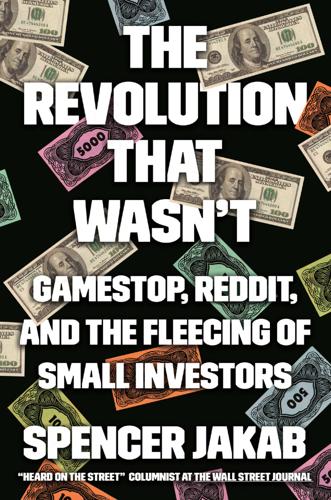
The Revolution That Wasn't: GameStop, Reddit, and the Fleecing of Small Investors
by
Spencer Jakab
Published 1 Feb 2022
From June through August, the Nasdaq Composite had a strong rally, rising by 24 percent, and the big tech stocks that led the charge did even better than that. That wasn’t mere good luck, though, because the whale’s gamble was even bigger than believed. By early September it emerged that the buyer was Japan’s SoftBank Corp., led by the risk-loving billionaire Masayoshi Son. Reporters also learned that his $100 billion Vision Fund had simultaneously purchased billions of dollars of many of the underlying tech stocks. At face value that just sounds like two gigantic bets instead of one. There was a method to Son’s madness, though. As with short selling, options dealers are taking on a theoretically unlimited risk by transacting with you, and they aren’t in the risk-taking business.

Enshittification: Why Everything Suddenly Got Worse and What to Do About It
by
Cory Doctorow
Published 6 Oct 2025
The majority of US households have Prime, and the majority of Prime households start their shopping search on Amazon and don’t go any further if they find a suitable item. Uber’s a monopsonist, too. Having spent $31 billion of its early investors’ money (mostly drawn from the Saudi royal family, who funneled the funds through the Japanese entrepreneur Masayoshi Son’s venture capital firm SoftBank) subsidizing taxi rides, the company now dominates urban transport. The tens of billions of dollars that Uber blew on subsidies (losing 41 cents on every dollar it brought in for twelve years) convinced many cities that public transit was an irrelevant historical curiosity and that cheap ride hailing would be here forever, prompting a lost decade of disinvestment in transit.
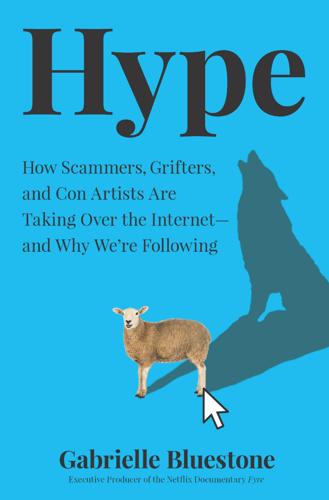
Hype: How Scammers, Grifters, and Con Artists Are Taking Over the Internet―and Why We're Following
by
Gabrielle Bluestone
Published 5 Apr 2021
There was nothing innovative about what the business model was, and yet it had a tech element to it, and he owned none of his real estate and somehow was going to make money subleasing all this stuff.” In fact, WeWork’s valuation and size were almost entirely due to a different man entirely: the Japanese billionaire Masayoshi Son, the CEO of SoftBank who also happens to back Uber. He’s probably done more to inflate the Silicon Valley bubble than anyone else, but after losing a fortune twice and gaining it back three times, he’s still making big bets that any company he takes a shine to can end up owning a sector thanks to the sheer amount of cash he pumps into it.

Ghost Road: Beyond the Driverless Car
by
Anthony M. Townsend
Published 15 Jun 2020
But while they hold the same aspirations for market domination and follow their predecessors’ familiar playbook, their scale is far greater and their reach into our lives far deeper. Their tentacles are already encircling the globe and will shape how we travel for decades to come. Nowhere are the ambitions of tomorrow’s traction tycoons clearer than in the empire assembled by SoftBank, the Japanese holding company founded by Masayoshi Son in 1981 (Figure 7-2). From its humble beginnings as a computer parts store, SoftBank has grown into the world’s largest technology investor. The group’s $100 billion Vision Fund, launched in 2017, wields a purse that is itself bigger than the entire venture-capital industry, which invests a mere $70 billion annually worldwide.
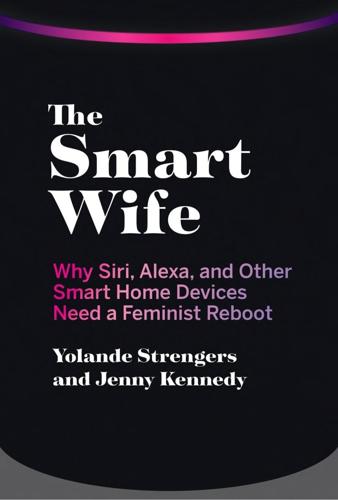
The Smart Wife: Why Siri, Alexa, and Other Smart Home Devices Need a Feminist Reboot
by
Yolande Strengers
and
Jenny Kennedy
Published 14 Apr 2020
They fulfill these duties in a range of health, hospitality, finance, and domestic service environments, including nursing and residential homes, hospitals, hotels, schools, shopping malls, banks, and airports. Although there are different designs and purposes, the central aim that unites these social robots is to connect with humans. Regarding Pepper’s launch onto the consumer market in June 2015, Masayoshi Son—the chief executive of Japanese company SoftBank Robotics, the robot’s manufacturer—described it as a “baby step on our dream to make a robot that can understand a person’s feelings, and then autonomously take action.”4 He went on to say that “when people are described as acting like a robot, it means they have no feeling or emotions—we start challenging this concept today.
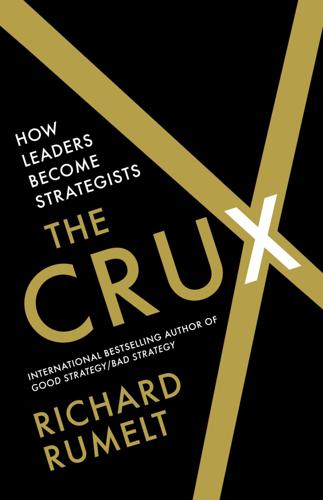
The Crux
by
Richard Rumelt
Published 27 Apr 2022
The initial investment in WeWork was $4.4 billion, implying a valuation of $18–$20 billion. Despite claims by CEO Adam Neumann that the company was profitable, it was not—it made huge losses. By 2018 the company had burned through its cash and needed more, so an IPO was planned. The deal, arranged by Neumann and SoftBank CEO Masayoshi Son, valued WeWork at $47 billion. As part of the deal, $1 billion would go to buying shares from existing investors, including the board of directors. When the IPO prospectus became public, reactions to the history of losses, the increasingly erratic behavior of Neumann, and the company’s fluffy mission concept were negative.
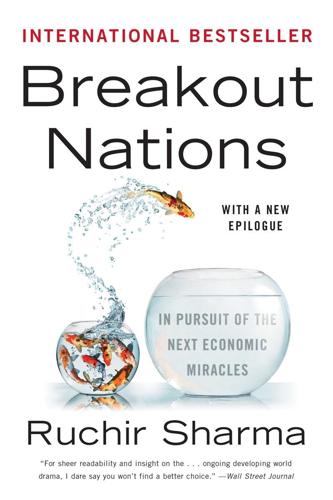
Breakout Nations: In Pursuit of the Next Economic Miracles
by
Ruchir Sharma
Published 8 Apr 2012
South Korea has become a model of change; Japan, a symbol of the status quo. As the KOSPI index became a mirror of world markets in recent decades, Japan’s Nikkei index fell into a long swoon largely impervious to global trends. It is symptomatic of these shifting fortunes that today the richest man in Japan is an ethnic Korean, the billionaire entrepreneur Masayoshi Son. No Service Please, We’re Korean My sense of what’s happening on the Korean peninsula has changed dramatically since the great global boom of 2003–2007, when the Korean “miracle” appeared to be running out of steam. Like most Asian nations, South Korea had grown since World War II by manufacturing low- or moderate-priced goods for sale to rich nations, and this strategy seemed to be reaching its limits.

Careless People: A Cautionary Tale of Power, Greed, and Lost Idealism
by
Sarah Wynn-Williams
Published 11 Mar 2025
If they come back from that, maybe they attempt their own start-up or fund or, most likely, philanthropy. None of this sounds very enticing. Given the scale of Mark’s affluence, what actually matters to him? It’s unfathomable to me. This endless wealth. I try to explain that to him over dinner. “I was actually talking about this with Masa the other day,” Mark responds. Masayoshi Son is CEO of SoftBank, a Japanese conglomerate that invests heavily in technology companies, including many of the buzzy start-ups Mark’s interested in. “And we both agree.” “Agree on what?” “The most important thing.” “What is it?” “Food,” he says, lifting a chopstick toward his mouth. A dangling piece of fried deliciousness hangs in the air near his lips.
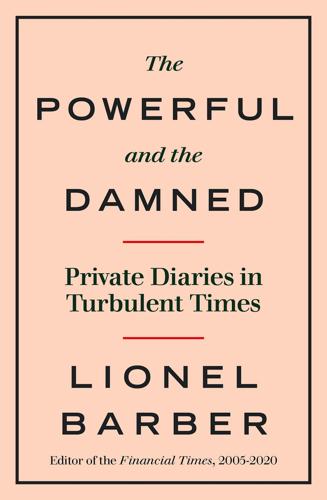
The Powerful and the Damned: Private Diaries in Turbulent Times
by
Lionel Barber
Published 5 Nov 2020
The Brexit referendum has chilled a relationship never that close in the first place. My reply: ‘Boris, read the goddamn newspaper. We accept the result. PS We are also delighted to help you agree on what comes next – something you failed to discuss properly in the campaign.’ FRIDAY, 22 JULY Breakfast with Masayoshi Son, the Korean-Japanese venture capitalist and founder of SoftBank, the Japanese technology powerhouse. Son is a short, balding man in his late fifties who speaks in an understated manner which gives no clue to his awesome financial power, largely based on a stake in Alibaba, the fast-growing Chinese tech giant.

The Long History of the Future: Why Tomorrow's Technology Still Isn't Here
by
Nicole Kobie
Published 3 Jul 2024
Bruno Maisonnier’s Aldebaran Robotics is the brains behind two of the most successful (or at least best-known) robots in history: Nao and Pepper. Launched in 2008, the dancing, football-kicking, research-enabling Nao is one of the most successful bipedal robots we’ve yet to see. While only a wee thing at 55cm (22in) tall, it was enough to nab the attention of billionaire SoftBank owner Masayoshi Son. Sometimes called ‘the Japanese Bill Gates’, Son studied in California before returning to Japan and launching SoftBank, which began life as a telecoms company before evolving into a tech investor. Son wanted to push forward his dream of humanoid robots, and SoftBank bought a majority stake in Maisonnier’s firm in 2013.
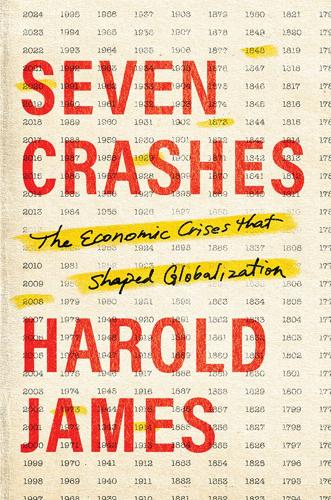
Seven Crashes: The Economic Crises That Shaped Globalization
by
Harold James
Published 15 Jan 2023
The unknowability of eventual outcomes is very clear in the story of an iconic firm at the heart of the world’s transition to fintech. A crucial part of its success depended on relations with very different kinds of government. SoftBank was founded in Tokyo in September 1981 by twenty-four-year-old Masayoshi Son, the son of Korean immigrants who graduated from the University of California at Berkeley with degrees in computer science and economics. At Berkeley he was a highly entrepreneurial student: he developed an electronic translator that he sold to Sharp Corporation for $1 million, and made another million by importing used video game machines from Japan, and installing them in dormitories and restaurants.63 Back in Japan, he built up SoftBank as a software distributor and publisher of magazines about computing.
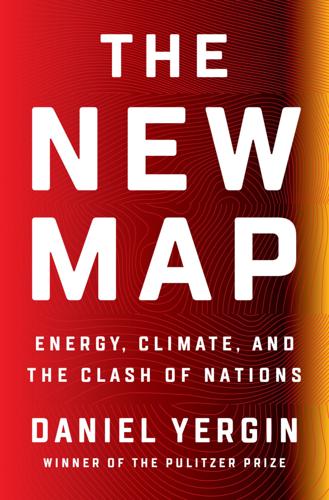
The New Map: Energy, Climate, and the Clash of Nations
by
Daniel Yergin
Published 14 Sep 2020
To emphasize the change coming in the country for the young Saudis who were watching online, he pulled out what looked like an “old” BlackBerry—circa 2005—and a current iPhone. The difference between the two, he said, is how Saudi Arabia would change. The image went viral. But there were also definite limits. At one point, one of the panelists, Japanese tech tycoon Masayoshi Son, became so excited by the “dream” of the plans for the futuristic new half-trillion-dollar city, Neom—with robots busily at work, even doing people’s shopping—that he exclaimed that it would be nothing less than a “new Mecca.” That was too much. The crown prince grabbed the microphone. “No, no, no,” he said.
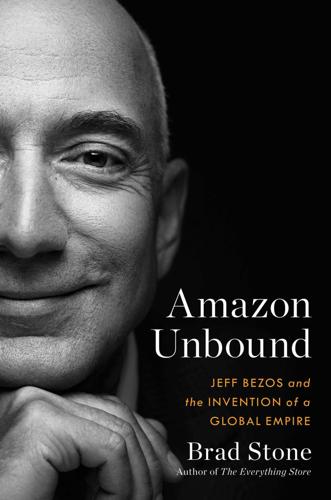
Amazon Unbound: Jeff Bezos and the Invention of a Global Empire
by
Brad Stone
Published 10 May 2021
He pursued the acquisition earnestly, according to several colleagues—even over any concerns from Amit Agarwal, who would have the frightening responsibility of integrating two disparate brands and money-losing supply chains. In March 2018, Bezos hosted Sachin Bansal and Flipkart CEO Kalyan Krishnamurthy in the boathouse behind his home on Lake Washington. A few weeks later, he spoke over the phone with two of Flipkart’s most influential backers, Tiger Global partner Lee Fixel and SoftBank chairman Masayoshi Son, aka “Masa,” who particularly favored a deal with Amazon over Walmart and seemed determined to enlist Bezos as a long-term ally. The sticking point in the Amazon-Flipkart talks was a breakup fee. Flipkart’s investors feared the uncertainty of the regulatory review process and knew of Amazon’s infamous reputation for engaging in discussions only to not follow through, or to try to raise the price for a more determined rival.

The Quiet Coup: Neoliberalism and the Looting of America
by
Mehrsa Baradaran
Published 7 May 2024
The unicorn promises to do more: to financialize what Wall Street had not dreamed of financializing: not more asset classes, but society itself. The market has come full circle. Our modern visionaries at the edge of the market frontier, however, reveal a rather grim and limited vision for humanity’s future. The $154 billion Vision Fund, WeWork’s angel investor, is illustrative. It was started by Masayoshi Son, the founder and CEO of the multinational conglomerate SoftBank. Vision Fund’s mission, as stated in its marketing documents, is to spread “happiness to everyone” and to “increase people’s joy.” The initial $100 billion investment in the Vision Fund came from Mohammad bin Salman, the tech-friendly Saudi known as MBS who is the de facto ruler of one of the most unequal countries in the world and whose $1.4 trillion of oil wealth is invested in several tech unicorns.
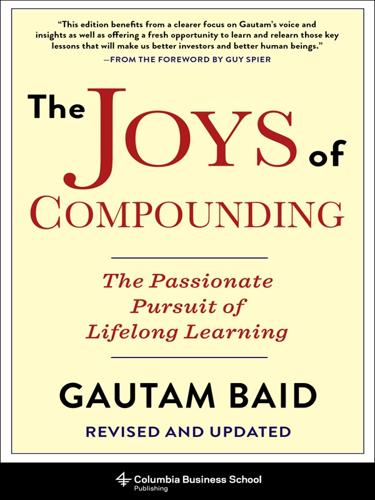
The Joys of Compounding: The Passionate Pursuit of Lifelong Learning, Revised and Updated
by
Gautam Baid
Published 1 Jun 2020
Fear of the unknown is one of the most potent kinds of fear, and the natural reaction is to get as far away as possible from what is feared. Unknown unknowns make most of us withdraw from the game. These, however, are also the circumstances in which extraordinary returns are possible. (Readers should study the case study of the most successful investment ever in the history of mankind—Masayoshi Son’s investment in Alibaba in 1999 which delivered a 6,500× return.) Fortune favors the brave, and market prices and valuations tend to reflect our innate tendency to avoid uncertainty. One way to think about unknowable situations is to recognize the hugely asymmetric payoffs they offer. If you have a chance to multiply your money ten to twenty times, and that chance is offset by the possibility that you could lose all of it in that particular commitment, then it is a good bet to be exercised, provided you are sufficiently diversified.
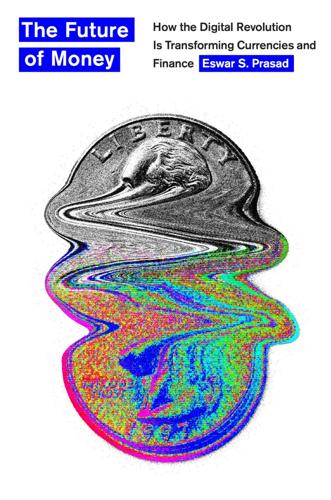
The Future of Money: How the Digital Revolution Is Transforming Currencies and Finance
by
Eswar S. Prasad
Published 27 Sep 2021
Facebook’s initial public offering of stocks in 2012 raised $16 billion and gave the firm an overall valuation of $104 billion. In less than a decade, the value of a 10 percent stake—which cost Thiel half a million dollars and Accel $12 million a year later—had risen to more than $10 billion. At the other end of the spectrum is a case involving Japan’s SoftBank Group. Its risk-taking chairman, Masayoshi Son, set up the $100 billion Vision Fund, which came to be known for undertaking private equity investments in technology companies in their infancy. Early investments in companies such as Alibaba, Yahoo!, and Uber yielded substantial profits. Son acquired the reputation of a visionary investor in technology start-ups.